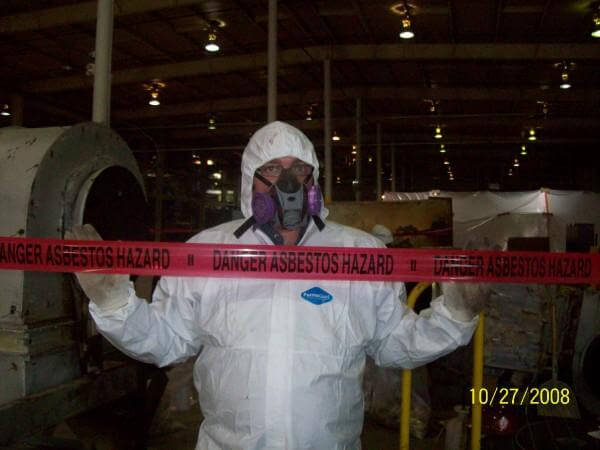What is asbestos?
Asbestos is a naturally occurring fibrous silicate mineral used in a variety of commercial applications. The word asbestos is Greek for “inextinguishable” or “indestructible.” Asbestos was used widely from approximately 2000 BC and is still seen in buildings built until circa 1985.
Why was it used commercially?
Industrial age mining for asbestos in America became prevalent in the 1940’s. Asbestos appealed to manufacturers and builders for a variety of reasons including the following: non-flammable/inert/non-soluble, no odor, superior insulator, high tensile strength, and some types (Anthrophyllite, Amosite and Crocidilite) are acid resistant. Few other available substances combined the same qualities which contributed to the wide use of asbestos.
Asbestos commercial uses
According to the EPA, “One study estimated that 3,000 different types of commercial products contained asbestos. The amount of asbestos in each product varied from as little as one percent to close to 100 percent. Many older plastics, paper products, brake linings, floor tiles and textile products contain asbestos, as do many heavy industrial products such as sealants, cement pipe, cement sheets, and insulation.”
OSE commonly finds floor tiles and mastics (9” x 9” and 12”x12”floor tiles) to contain asbestos. Asbestos mastic usually looks black/brown and generally needs to be remediated. Other commercial uses we see are vinyl sheet flooring (backing), decorative wall plaster, spray-on ceiling material, spray-on insulation, ceiling tiles, glue dots, transite walls, parapet and some roofing, thermal systems insulation (TSI) air cell, piping/pipe elbows, roofing (built up, membrane, shingle and flashings).
Other regulated materials to consider
When restoring an existing building, asbestos is not the only regulated material that needs to be considered. Lead-containing paint, especially if found in housing or child-occupied facilities, will need to be removed if found. While mold is not regulated in the same way as asbestos and lead paint, it is highly litigious and would need to be abated as well.
How do I know if asbestos/lead is present?
One way to know if asbestos/lead is present in your building is through an asbestos/lead survey. These surveys usually range in price from $1,000-$5,000. They can get more expensive depending on the size of the building. It is possible that a survey for your building already exists and will save you one expense.
When am I required to abate asbestos?
The renovation/demolition requirements (commercial only) are as follows:
- Performing any renovations that will or may disturb the asbestos material
- Residential units of 4 dwellings or less are excluded
- Threshold amount of asbestos-containing material
- Friable Material (solid material that is pulverizable by hand pressure) >260 linear
- feet/160 square feet/35 cubic feet
- Demolition project with or without ACM- does not apply
- Structure burned for fire training- does not apply
It should be noted that asbestos found in schools is different, and more stringent regulations apply.
When can I leave it?
Operations and Maintenance Requirements (Commercial Only) are as follows:
- Maintain asbestos-containing materials (ACM) in good condition within buildings
- Formulated plan of training, cleaning, work practices, and surveillance
- Requires special OSHA training (29 CFR – 1910.1001(j)(7))
- Encapsulation
- Encasement of material by physical or chemical barriers
- Material must be in good condition
- Physical: window encasement
- Chemical: liquid encapsulation by airless sprayer
In closing, don’t let regulated materials surprise you, get an estimate from a specialist. Know what to look for, potential asbestos containing materials, deteriorating paint/ musty odor or visible mold. Have a survey performed so you will know what you have in your building. Don’t let regulated materials stop you from taking on the renovation of a historic building, discuss your options with a specialist.




